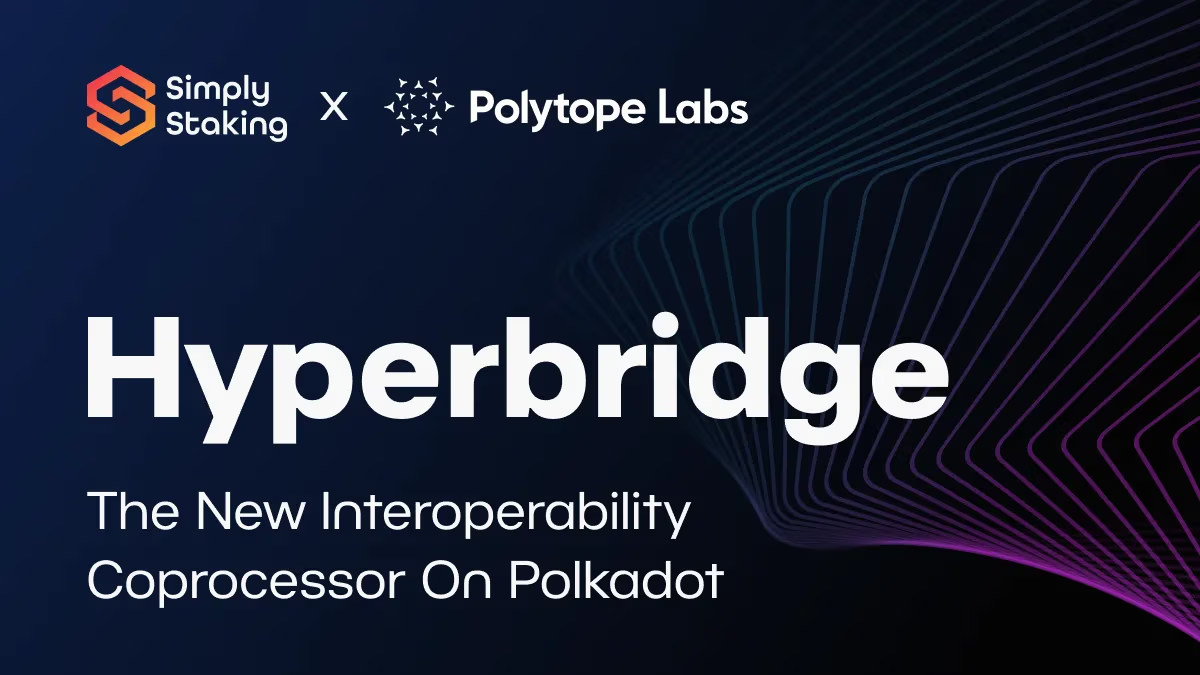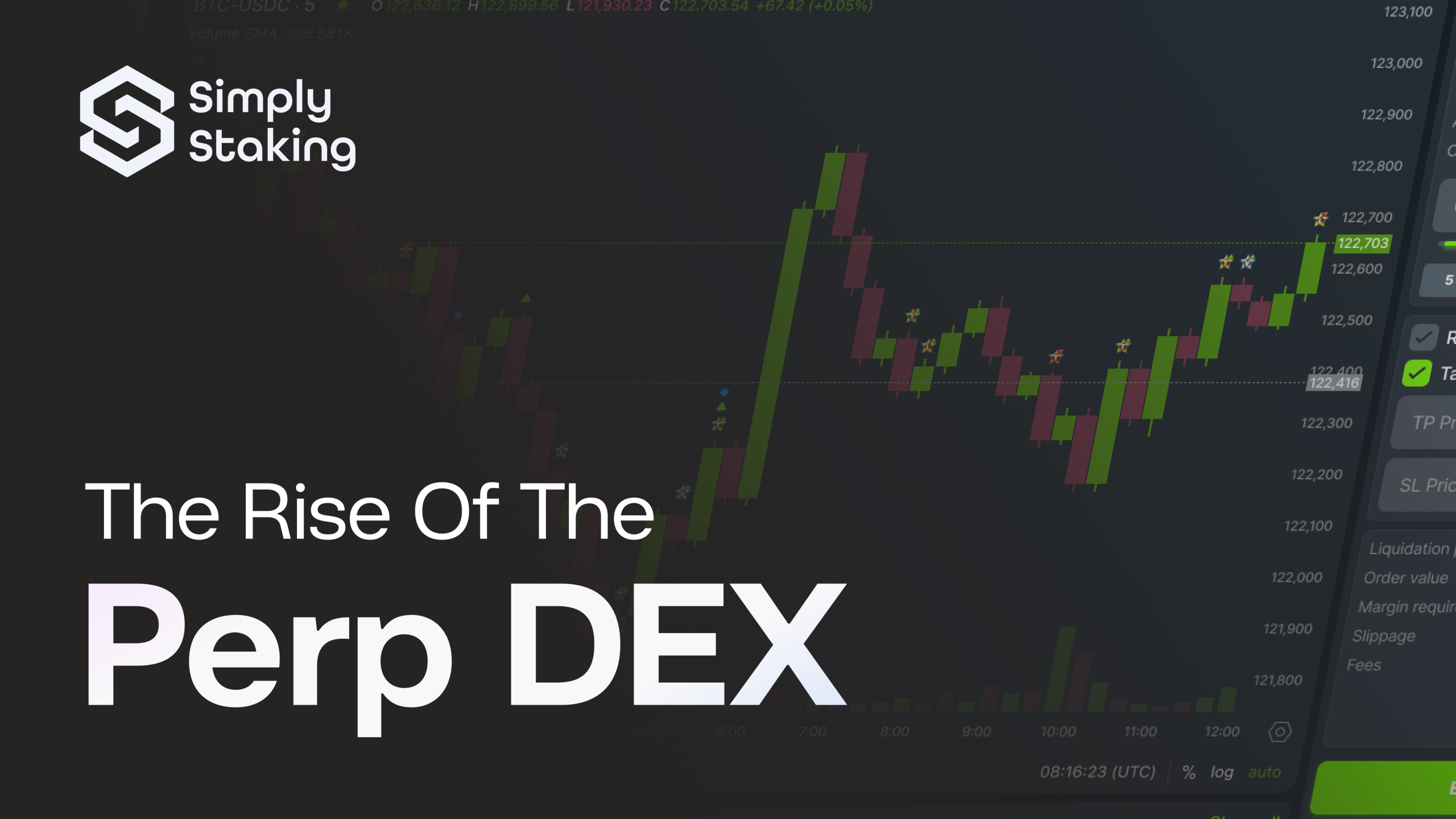April 24, 2024
How to Stake Polkadot
Polkadot Staking Guide

STAKE TOKEN
Polkadot (DOT)
Polkadot enables cross-chain communication and scalability, fostering interoperability across blockchain ecosystems with its parachain architecture.
APR 9.42%
Total Stake
NA
Market Cap
3.29BUSD
Token Price
2.0000 USD
How many DOT do you want to stake?
Delegation Amount
640 DOT
$0.00
Daily Earnings
0 DOT
$0.00
Monthly Earnings
0 DOT
$0.00
Yearly Earnings
0 DOT
$0.00

April 24, 2024
How to Stake Polkadot
Polkadot Staking Guide

April 18, 2024
Outlining the Vision for Polkadot 2.0
Polkadot Deep Dive

April 18, 2024
Hyperbridge on Polkadot
Polkadot Analysis

April 18, 2024
Insights from Polkadot’s top whale
Polkadot Analysis

November 27, 2025
The Rise of the Perp DEX.
Network Introduction

November 13, 2025
What is Hyperliquid?
Hyperliquid Article

Polkadot is a decentralized, multi-chain blockchain platform that facilitates the interoperability of various blockchains. It allows multiple blockchains, known as parachains, to operate independently while sharing security and communication through the Polkadot relay chain, enabling a scalable and flexible ecosystem.
Polkadot uses a unique architecture where multiple blockchains (parachains) connect to a central relay chain. This relay chain coordinates the network's security, consensus, and interoperability, allowing different blockchains to transfer data and assets seamlessly across the network.
DOT is the native token of the Polkadot Network. It is used for staking, governance, bonding, and paying transaction fees. DOT holders can participate in governance decisions, such as protocol upgrades and parachain auctions, and can stake their tokens to secure the network and earn rewards.
You can stake DOT tokens directly via Simply Staking by clicking the "Stake" button above. This allows you to delegate your tokens to a validator, contributing to the network’s security and governance while earning staking rewards.
To stake Polkadot (DOT) directly, use a non-custodial wallet like Polkadot-JS. Make sure you have at least 250 DOT to meet the minimum bond requirement. Klick on above Staking link and then klick Stake. Bond your tokens and nominate up to 16 validators. Rewards start once your nomination enters the active set. You must also be above the dynamic minimum to earn rewards. Always pick reliable validators to maximize returns and avoid slashing.
You might not earn rewards if your nominated validators aren’t in the active set, charge 100% commission, or if your stake is below the dynamic minimum. Rewards must also be claimed manually if validators don’t trigger payouts. To earn consistently when staking Polkadot, nominate several active validators and check your eligibility on the Targets page.
Yes. If you have less than the 250 DOT minimum for direct staking, you can join a Nomination Pool and stake Polkadot with as little as 1 DOT. Pools combine smaller stakes so members share rewards proportionally. This lets smaller holders earn staking rewards without meeting the high direct staking threshold.
When you nominate multiple validators on Polkadot, your entire stake typically supports only one active validator per era. Others stay inactive until selected. The network automatically balances which validator your DOT backs each era. You can view your active and inactive nominations on Polkadot-JS under Network / Staking / Accounts.
Polkadot aims for 1000 validators to ensure security, decentralization, and performance. Each validator runs a full node that secures both the relay chain and connected parachains. Other networks with more validators often use lighter setups. Through Nominated Proof-of-Stake, thousands of nominators can still help secure the network by staking DOT without running nodes.
The Polkadot relay chain produces one block every six seconds. This fast block time ensures quick finality and efficient parachain validation across the network.
Yes. Polkadot will support Solidity smart contracts by late 2025. Meanwhile, smart contracts can already run on parachains built for EVM or Wasm compatibility, benefiting from Polkadot’s shared security and cross-chain functionality.
Polkadot uses cross-chain bridges to connect with other networks securely. These bridges are designed to be trust-minimized, using economic incentives to keep operators honest. Work on these bridges continues in collaboration with multiple ecosystem projects to expand interoperability.
Polkadot’s architecture allows parallel transaction processing across parachains. Benchmark tests in 2024 showed over 623,000 transactions per second (TPS) potential. This scalability comes from its sharded network design, where parachains process transactions simultaneously while being secured by the relay chain.
DOT has an annual inflation rate of around 8%. About 85% of newly issued tokens go to staking rewards for validators and nominators, while the remaining 15% funds the Polkadot treasury.
DOT transfer fees depend on transaction size and weight. The base fee is about 0.001 DOT, plus additional costs based on transaction complexity. Fees adjust dynamically with network activity to keep the system efficient and fair.
Polkadot uses Nominated Proof of Stake (NPoS) for energy efficiency and stronger finality. Unlike Proof of Work, it doesn’t waste electricity or rely on mining. Validators and nominators stake DOT to secure the network and earn rewards, promoting both sustainability and decentralization.
Polkadot’s on-chain governance lets token holders vote on upgrades and changes. Regular successful upgrades show that the system works in practice. The community’s active participation ensures protocol evolution and prevents governance stagnation or failure.
Yes, if you choose the “Restake” option. This bonds rewards back into your stake, increasing your future returns. If set to “Payout,” rewards go to your account as liquid DOT instead.
You can claim rewards through the Polkadot-JS app or your staking dashboard. Rewards are available every era (24 hours). If not automatically distributed by validators, you can claim them manually for multiple eras at once.